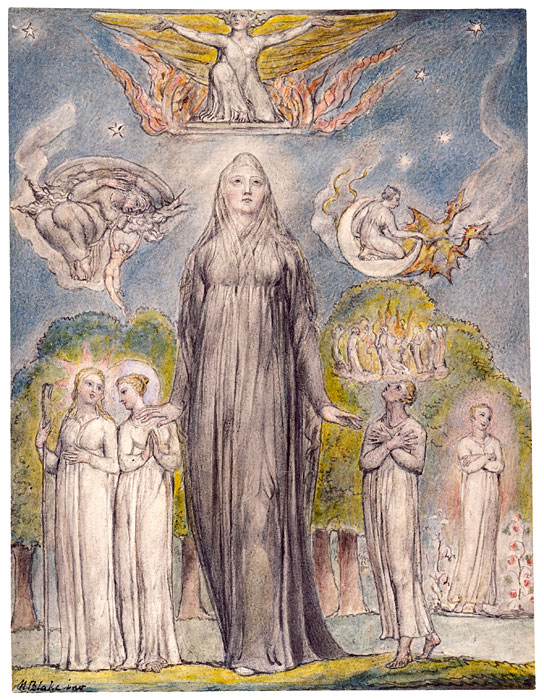
V. Milton's L'Allegro and Il Penseroso
The Morgan preserves Blake's twelve watercolor designs for Milton's early poems L'Allegro and Il Penseroso that contrast the cheerful man with the melancholic, thoughtful one. Like the illustrations for the Book of Job, Blake created them on commission for Thomas Butts about 1816–20. The two series were separated in 1903 and not reunited until 1949, when they were acquired as the first purchase by the Morgan's newly formed Association of Fellows.
Milton, along with Dante and the Bible, was one of Blake's great inspirations. Blake wrote a long and mystical poem, Milton, and executed several other series of illustrations for Milton's works.
Each of the watercolors in this series is accompanied by Blake's transcription of the relevant portion of the poem as well as his notes on his design.
